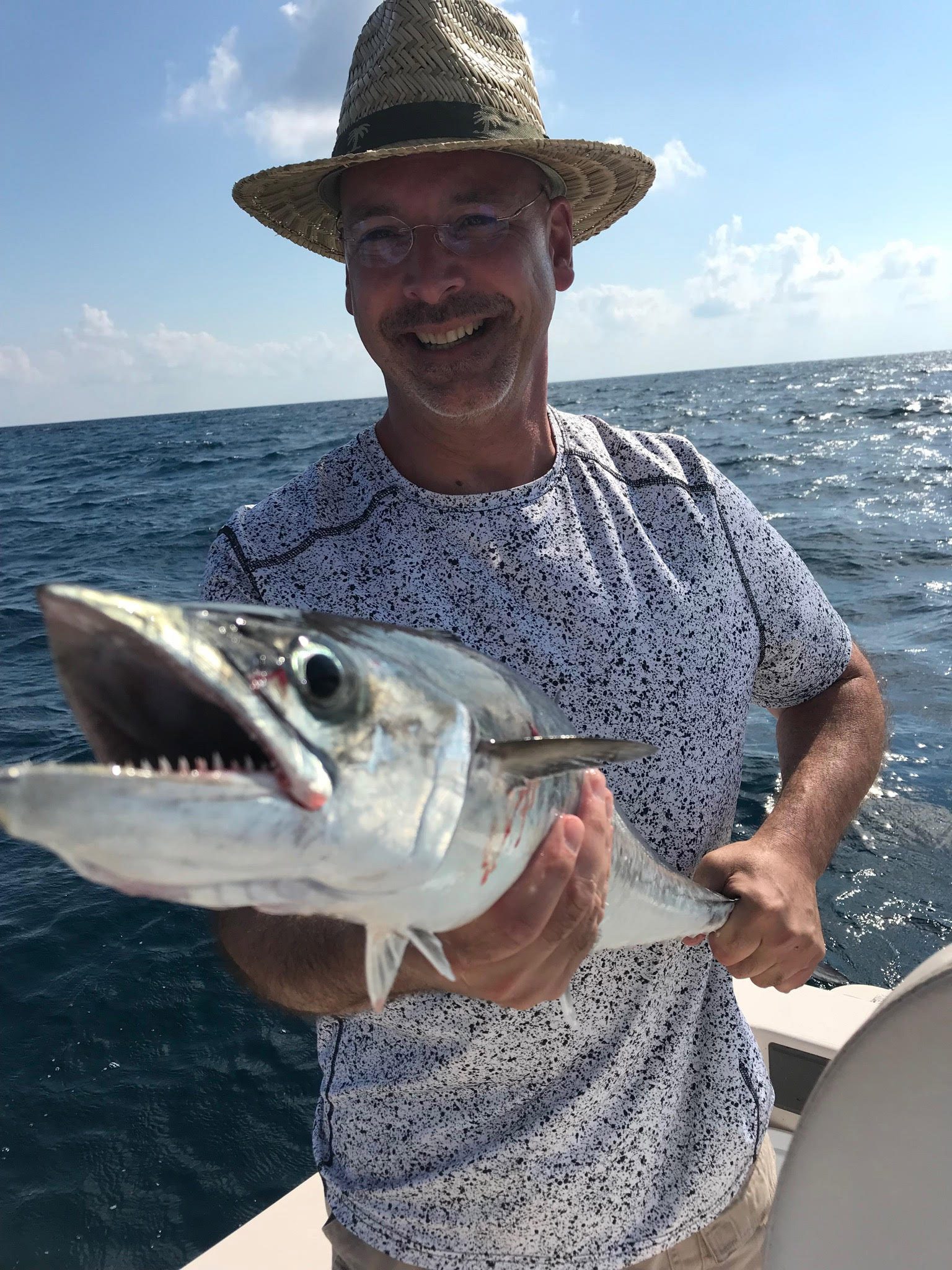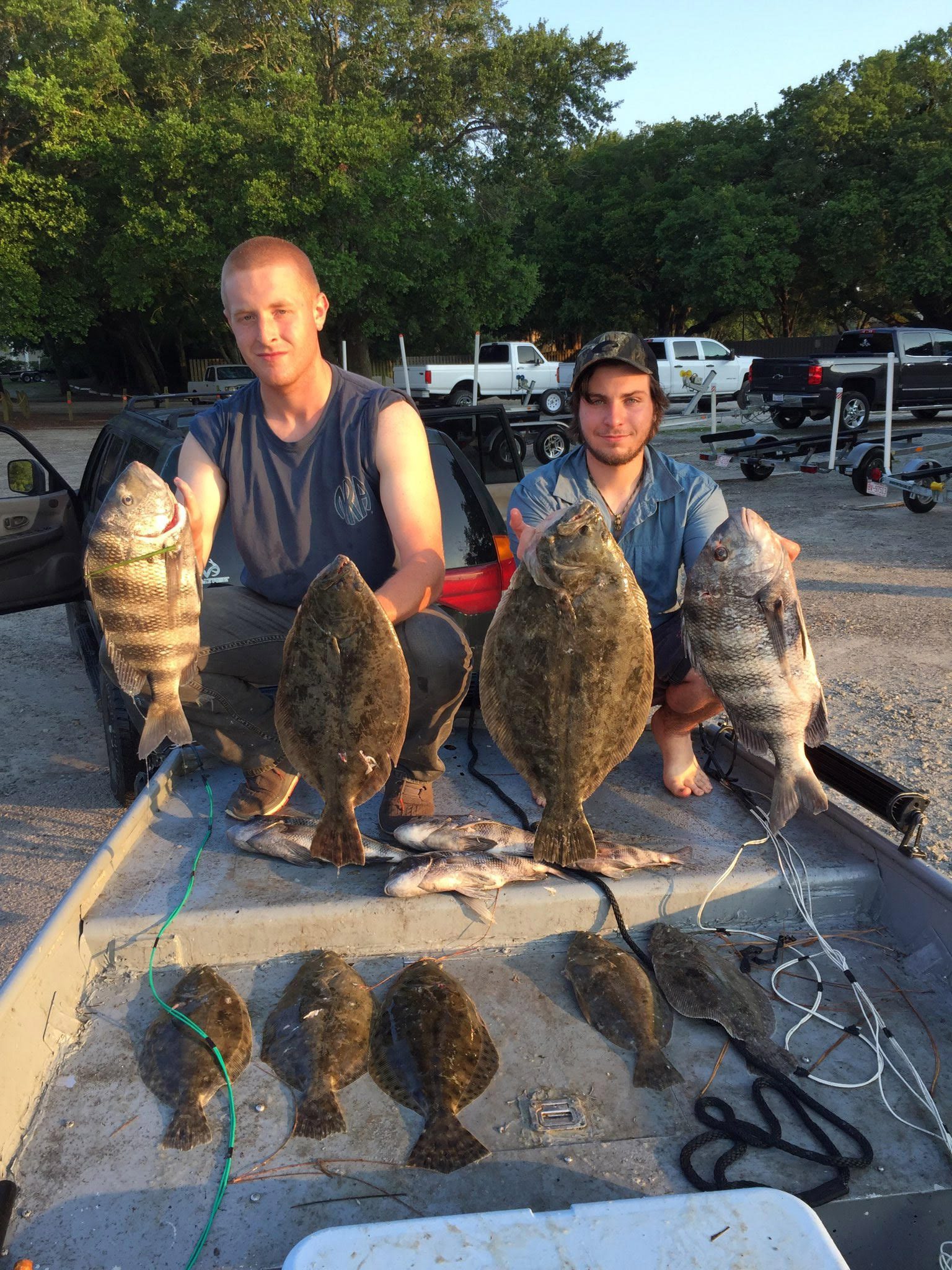Morehead City/Atlantic Beach – July 19, 2018
Matt, of Chasin’ Tails Outdoors, reports that the inshore flounder bite has picked up, especially near the port wall, at the AB Bridge, and around ICW docks. Most of the fish have been caught on live minnows or 2 oz. bucktails tipped with Gulp shrimp. If nearshore flatties are more your speed, check out ARs 315, 320, and 330 to find fish.
Sheepshead have been consistently chewing around the usual spots (bridges, docks, and near the port). Live sea urchins and fiddler crabs have been the ticket, though CoCo Crabs have been working well on the artificial side.
The red drum bite has been up and down due to unstable tidal patterns, but Core Creek and the Haystacks have been the best places to look, especially around oyster bars. There’s been a lot of bait in the river, and all signs are pointing to old drum being a great target as the season progresses.
Trout are also shaping up to have a good season, as a few citation fish have already been landed over the past few weeks.
In the surf, the catch has been mixed. Black drum, sea mullet, sheepshead, blues, croakers, sharks, and rays have all been coming in, especially in Fort Macon Park both around the rock jetty and on the sound side. The best baits have been shrimp, mullet, squid, and live mud minnows. Anglers fishing at night have also been finding some bull drum.
Spanish are running along the beaches, with boats limiting out daily, and the king mackerel action is as hot right now as it typically is in late autumn months. Fish as heavy as 60 lbs. have been coming in from the shipping channel out of Beaufort Inlet and over on the east side of Cape Lookout. Smaller fish have been hanging around nearshore ARs (along with the majority of the spanish that are being caught in the area). Dead cigar minnows on dead bait rigs, as well as Pirate plugs and Mac-a-Hoos, have all been getting attention from the kings.
Offshore time has been limited due to recent storms, but when boats can make it out, they’re finding that dolphin are scattered everywhere, with some fish being caught just a few miles out. Most of the fish, though, have been around the Northwest Places, Big 10/Little 10, the 14 Buoy, and from the 90’ Drop out to the Big Rock. Ballyhoo have been the prime bait, while the Monkalur has been getting strikes from a lot of the smaller fish that have been around.
Bottom fishing has been worth the time when fishing in the 30-35 mile range, though some decent action has also come in from the east side of the Cape around the Atlas Tanker and 17 Rock. In the mix have been grouper, triggers, sea bass, grunts, and amberjacks. The best baits to use have been squid, mackerel, cigar minnows, sardines, and menhaden.

Patrick DiCristofaro caught this 12 lb. king on a dead cigar minnow in 75′ of water south of Beaufort Inlet. He was fishing with Capt. Chris Kimrey of Mount Maker Charters.
Paul, of Freeman’s Bait & Tackle, reports that while fishing was really good a few weeks ago, the offshore storm has slowed things down a bit. It’s not impossible to find fish, though, as anglers have been catching red drum and speckled trout in the marshes. Topwater baits (such as Skitterwalks and Top Dogs) have been getting bites in the morning, while gold spoons and spinner baits have attracted fish throughout the rest of the day.
Surf fishing has been providing anglers with the standard range of bottom fish.
Spanish are biting along the beach, and kings are as close as the sea buoy. Live baits or cigar minnows are catching better quality fish than spoons recently.
Sailfish are as close as AR-320, while the blue marlin bite has been steady in the Gulf Stream.
Chris, of Mount Maker Charters, reports that 10-15 lb. kings and big spanish (up to 7 lbs.) have made up the majority of the catch for the last few weeks. Both species of mackerel can be found around nearshore reefs and ledges, where live pogies and mullet minnows will get the most bites. Spanish and some bluefish can also be caught by fly casting or throwing jigs to any schools that you can find.
Some nice flounder have been showing up on nearshore reefs, and bucktails will draw strikes. Inshore flatties can be caught on live baits.
Dave, of Cape Lookout Charters, reports that some massive red drum are being caught inshore on fresh and cut shad/mullet. Most of the fish are coming from bigger structure like docks and both the old and new bridge during a variety of tide stages, and they can average between 18-19 lbs. Heavy tackle is necessary, with big leaders and 2-3 oz. grouper jig heads needed to keep the big fish on the hook.
Trout are biting live peanut pogies, which are readily available in the creeks.
Bluefish and spanish have been biting off the beach, as have some small kings. The kings are chewing a little deeper than the other species, and #2 planers are needed to get down to them. Trolling 5-6” Rapalas is getting bites as well.

Luke Lemaster and Colby Simmons caught these fish near Trails End. The flounder fell for Gulp shrimp and finger mullet, while the sheepshead were caught on fiddler crabs. The biggest fish of each species weighed in at 8 lbs.
Justin, of Breakday Charters, reports that bull reds are showing up on the lower Neuse, and popping corks have been the most effective technique. Go out early and look for areas holding bait or signs of the fish themselves.
Flounder are finally making a decent inshore showing in the Morehead area. Live mullet on a Carolina rig or jig head is accounting for the majority of the bite. To find the flatties, concentrate on marsh banks and docks/structure.
Nearshore flounder are hitting 2 oz. bucktails with pearl trailers, but on some days live mullet will do better.
Kings are abundant from just off the beach out to structure in 70’ of water. Slow trolling dead bait or bump trolling live bait will get results. Spanish will fall for the same tactics on nearshore structure, and don’t be surprised if a mahi shows up, particularly in clean blue water.
Tom, of Dancin’ Outlaw, reports that spanish fishing is still incredibly productive along the beach, especially if you’re trolling Clarkspoons. The average size fish has been around 16”. A little farther offshore, fishing for small dolphin has been productive, especially from about 14 miles out to just inside the Big Rock. Squid strips and small ballyhoo have proven to be the best baits.
Julie, of Oceanana Pier, reports that red drum, spanish, bluefish, flounder, and sheepshead have made up the majority of the pier’s catch, though there have been a lot of pinfish around as well. A wide combination of baits has been working, with squid, mullet, and cut pinfish getting the most attention. It’s best to look for fish about three hours before high tide and during tide changes.





